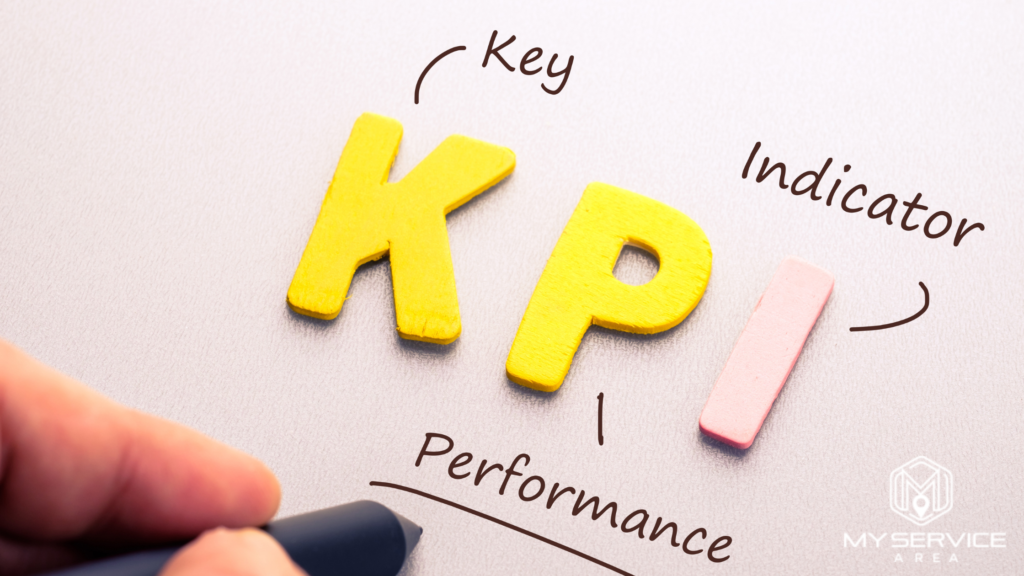Running a lawn care business takes a lot of hard work and the last thing you want to do is look at numbers.
If you really want your business to grow and succeed, you need to keep track of some important numbers.
These numbers are called “Key Performance Indicators“….KPIs for short.
KPIs help you know if your business is on the right track.
They are like a scoreboard that tells you if you are winning or losing. When you track these numbers, you can make better decisions for your business.
Let’s dive in and go over the most important KPIs that every lawn care business owner should track in Jobber, Service AutoPilot, LMN software, Yardbook, GorillaDesk or the lawn care software you are using.
- Revenue (Income)
What is it?….I know….dump question, right?
Revenue is the total amount of money your business makes from customers. This is the money that comes in when you mow lawns, trim bushes, and do other yard work.
Why is it important?
Tracking your revenue helps you see if your business is growing or shrinking.
If your revenue is increasing, that means more customers are using your services, or you are charging more for your work.
But if your revenue goes down, it may mean that you are losing customers, or your prices are too low.
By knowing your revenue, you can decide if you need to find more customers or change your prices to make sure you are making enough money to keep your business going.
How to track it:
– Write down the total amount of money you make each day, week, and month.
– Compare your revenue to previous months to see if it’s going up or down.
- Customer Retention Rate
What is it?
Customer retention rate tells you how many of your customers keep coming back to you for lawn care services. It’s the percentage of people who hire you again after the first time.
Why is it important?
It’s easier and cheaper to keep your current customers than to find new ones. If your customers keep coming back, it means they are happy with your work.
But if they don’t, it could mean there’s something wrong with your service, like showing up late or not doing a good job. When you know your customer retention rate, you can figure out ways to make sure your customers stay with you.
How to track it:
– Take the number of customers you had at the beginning of the month and the number who are still using your service at the end.
– Divide the second number by the first and multiply by 100 to get the percentage.
Example:
If you started with 100 customers and ended the month with 90, your customer retention rate is 90%.
(90 ÷ 100) × 100 = 90%
- Customer Acquisition Cost (CAC)
What is it?
Customer acquisition cost is how much money you spend to get a new customer.
This includes advertising costs, promotions, and anything else you do to bring in new business.
Why is it important?
If you spend too much money getting new customers, you might not have enough money left to make a profit. Knowing your CAC helps you figure out if your marketing efforts are worth the money.
For example, if you spend $50 to get one customer, but that customer only pays you $40 for a job, you are losing money. The goal is to keep your CAC as low as possible while still getting new customers.
How to track it:
– Add up all the money you spent on advertising and marketing in a month.
– Divide that by the number of new customers you got in that same month.
Example:
If you spent $200 on advertising and got 10 new customers, your CAC is $20.
$200 ÷ 10 = $20
- Gross Profit Margin
What is it?
Gross profit margin tells you how much money you make after paying for the costs of doing the job. This could be things like gas for your lawnmower, paying employees, or buying tools.
Why is it important?
Knowing your gross profit margin helps you understand if your business is making enough money to cover its expenses and still make a profit.
If your gross profit margin is too low, it means you are spending too much money to do the work, or you aren’t charging enough for your services. This KPI helps you make decisions on whether to raise prices or cut down costs.
How to track it:
– Subtract the cost of doing the job (expenses) from the total revenue for that job.
– Divide the result by your total revenue and multiply by 100 to get a percentage.
Example:
If a lawn care job brings in $100, and it costs you $60 to do the job, your gross profit is $40.
($100 – $60) ÷ $100 × 100 = 40%
- Job Completion Rate
What is it?
Job completion rate tells you how many jobs you finish on time and as promised. It’s the percentage of jobs that are completed without delays or problems.
Why is it important?
If your job completion rate is high, that means you’re getting jobs done on time and keeping customers happy.
But if it’s low, it could mean you’re having trouble keeping up with your schedule, or there are problems like broken equipment or poor planning.
Tracking this KPI helps you figure out if you need more help or better planning to get the work done.
How to track it:
– Take the number of jobs you completed on time and divide it by the total number of jobs you had.
– Multiply the result by 100 to get a percentage.
Example:
If you had 50 jobs in a month and finished 45 on time, your job completion rate is 90%.
(45 ÷ 50) × 100 = 90%
- Average Sale Price (ASP)
What is it?
Average sale price is the amount of money you charge for each job on average.
This KPI helps you understand your average pricing per job.
Why is it important?
If you know your ASP, you can determine if you need to increase your pricing or if you are not properly pricing your jobs.
For example, if you are only doing small jobs, you might need to take on more of them to meet your revenue goals.
Or, you could focus on getting larger jobs that pay more.
Either way, this number helps you understand the kind of jobs that are best for your business.
How to track it:
– Add up the total money you made from all your jobs in a month.
– Divide that by the number of jobs you did that month.
Example:
If you made $5,000 from 50 jobs, your average job size is $100.
$5,000 ÷ 50 = $100
- Customer Satisfaction (Net Promoter Score)
What is it?
Customer satisfaction is how happy your customers are with your work. One way to measure this is with a Net Promoter Score (NPS).
You can ask customers how likely they are to recommend your service to others on a scale from 1 to 10.
Why is it important?
Happy customers are more likely to keep coming back and tell others about your business.
Tracking customer satisfaction helps you know if your customers are pleased with your work or if there’s something you need to improve.
If your score is low, you can make changes to keep your customers happy, like improving the quality of your work or being more on time.
How to track it:
– Ask customers to rate how likely they are to recommend your service on a scale of 1 to 10.
– Use the feedback to improve your service.
The Wrap-up
Tracking KPIs might seem like a lot of work, but it’s one of the best ways to grow a successful lawn care business.
These numbers help you see what’s working, what isn’t, and where you can improve.
Whether it’s making sure you’re making enough money, keeping customers happy, or finishing jobs on time,
KPIs give you the tools to make smarter decisions.
By paying attention to these important numbers, you’ll be well on your way to building a lawn care business that thrives year after year.
If you’re not tracking these KPIs at some level today, make it part of your game plan to start!
Here’s to your success!


